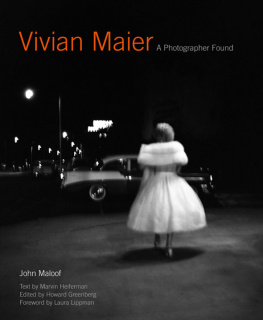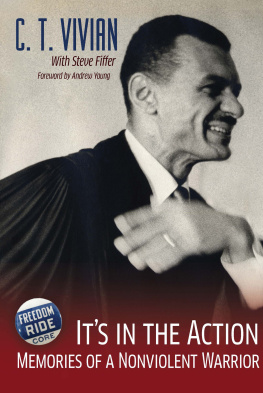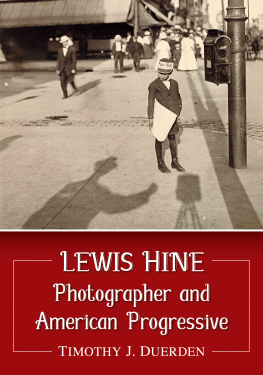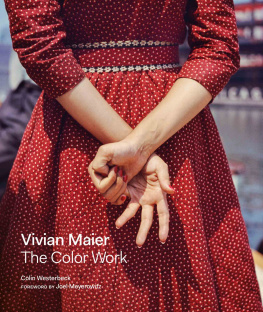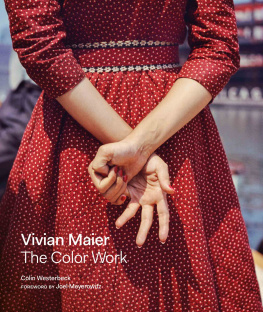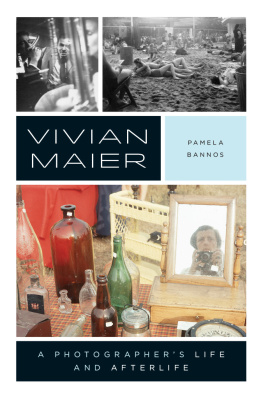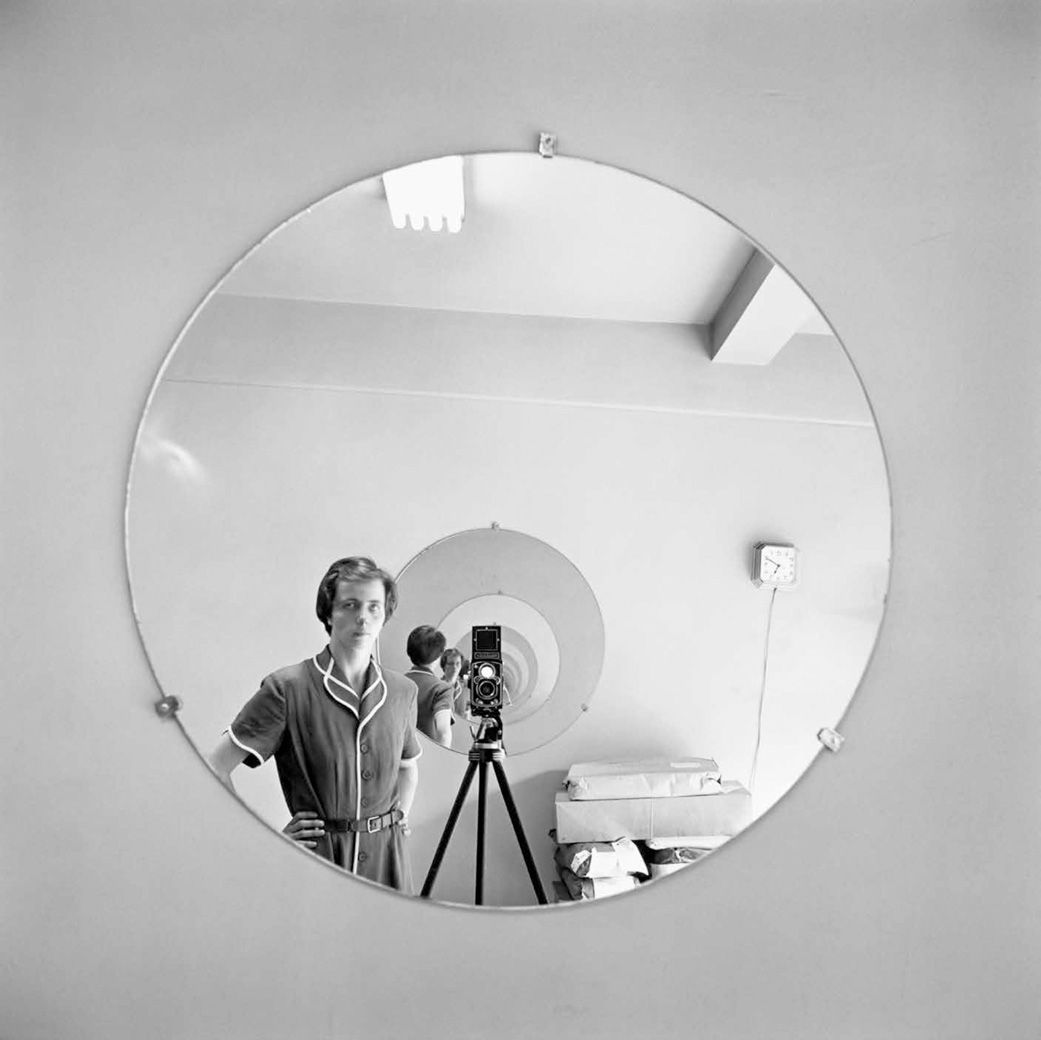
Self-portrait, location unknown, May 5, 1955.
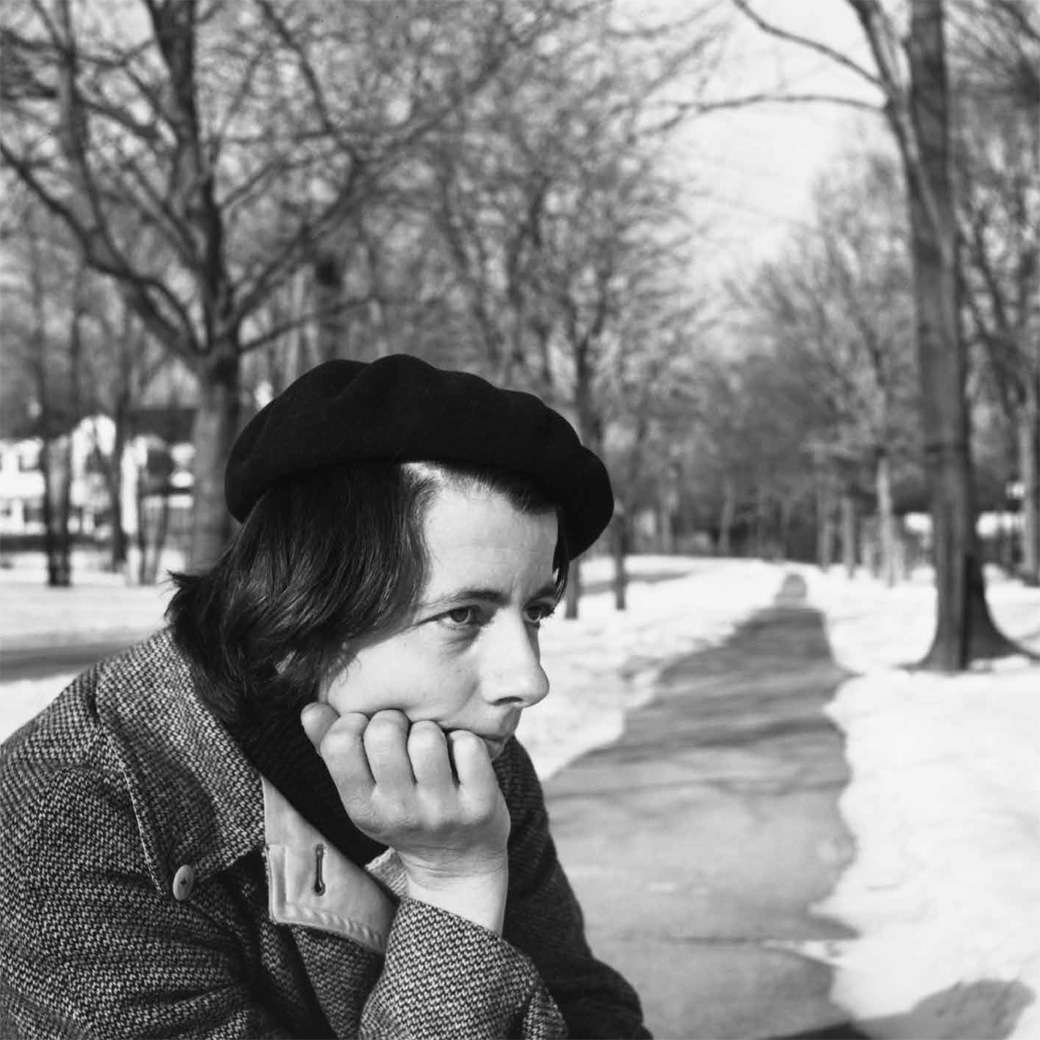
Self-portrait, location unknown, 1960.

Contents
LAURA LIPPMAN
MARVIN HEIFERMAN
A few years ago, I gave myself a challenge: see something new every day. At the time, I was happily in a rut, rising every day in Baltimore, walking the same route to a neighborhood coffeehouse, ordering the same breakfast, working for three hours, returning home. But did I really see the streets through which I passed? I decided to use my phone to snap whatever I noticed. I looked for odd architectural details, the names of the alley streets that dot my neighborhood, the dioramas that neighbors constructed in old storefront windows.
My self-challenge lasted two days, maybe three. As it turns out, I have more in common with Vivian Maiers subjects than I ever will with her. I can imagine myself as her camera might have captured me, a middle-aged woman with knitted brows and mussed hair, shouldering a ridiculously large backpack. Its an image reminiscent of one of my favorite photographs in this book, a veiled matron caught glancing over her shoulder at the moment the shutter clicks. Who are you? What do you want with me?
Even then, would I have seen Maier, truly seen her? Would I have recognized the artist at work, or would I have dismissed her as I myself sometimes feel dismissed: Whos that crazy middle-aged lady? Oh, well, shes probably harmless enough. Its not like shes taking photographs that anyone else will ever see.
Like almost everyone, I learned of Maier only after she died, discovering her work through that most un-Maier-like venue, Facebook. Almost immediately, I began wistfully clicking through the images of prints offered for saleand I have real pangs of regret to this day that I did not make it a priority to own one. (I have a long-standing belief that writers should take the odd bits of money that come insay, Turkish royaltiesand earmark them for art or travel.) Im sure there are many others who have experienced that same yearning. Luckily, this gorgeous book goes a long way toward slaking that thirst.
Maiers work and life have echoes of two other artists I adore. Helen Levitt, known for her streetscapes, is an obvious comparison. And so, in a different way, is Henry Darger, the outsider artist whose treasure trove of work was discovered in a Chicago apartment after he died.
Its important to note, however, that Maier was not an outsider artist like Darger, but an artist who was canny and intentional in her work. I write this sentence, then walk around it, consider it. Why is it important to make such distinctions? I ask this as a genre writer who is constantly being informed that what I do is lesser, with no claim to art. Would Maier have cared? She clearly valued her work, lugging cartons of negatives with her when she moved from one residence to another, but did she value what the world would have to say about it? We can never know. I flinched when I found one essay that described her photographs as a hobby, for although she met the Internal Revenue Services definition of a hobbyist, theres a whiff of condescension in that word. And I cannot imagine anyone condescending to Maier. Even her employers, when she worked as a nanny, seemed to have found her somewhat, um, unruly, with her disdain for housekeeping and her insistence on a place to store all those boxes.
Think about those forever-multiplying boxes of her work, the sheer effort it required to move them from place to place. Consider the number of photographs, more than one hundred thousand. If a photo is worth a thousand words, that puts Maiers output at one hundred million.
And excuse the clich, but a Maier photo is worth a thousand words. Each one tells a story, but it probably doesnt tell the same story to any two people. The faceless, humanless photos are as evocative as those in which her subjects make eye contact. A discarded high heel in front of a baby carriage, a coat rack, a shadow.
And excuse the clich, but a Maier photo is worth a thousand words. Each one tells a story, but it probably doesnt tell the same story to any two people. The faceless, humanless photos are as evocative as those in which her subjects make eye contact. A discarded high heel in front of a baby carriage, a coat rack, a shadow.
But the faces. Oh, these faces. The children are easy to love, as are those portraits that exploit our nostalgia for long-ago decades that we persist in thinking of as simpler. The self-portraits only deepen the mystery that was Maier, showing us everything, telling us nothing. I find myself drawn back to the nervous matron in her veiled hat, glancing back over the shoulder of her mink stole. Who are you? What do you want with me? I feel Maier more vividly present in that photo than I do in those in which we see her face or silhouette. In seeing someone see her, I sense Maiers presence.
Poring over this collection, I found myself thinking of a story my husband recently shared with me. A musician, a gifted harmonica player, had a small group of students. They were good musicians, technically accomplished. He took them to see the blues musician and harmonica player Kim Wilson. Wilson played a Little Walter song. It was simple, accessible. One of the students said to his teacher: I can play that.
The teacher responded: But would you?
Vivian Maiers photos ask the same question. The people and sights she photographed were in the public domain, available to all. But you have to see them before you can photograph them. Yes, she was an artist, with a terrific eye and unmistakable technique. We have these photographs because she chose to immerse herself, through her Rolleiflex, in the world around her. To paraphrase the musicians lesson, we all theoretically can see the world that Maier saw. But would we?
LAURA LIPPMAN
New Orleans, April 2014
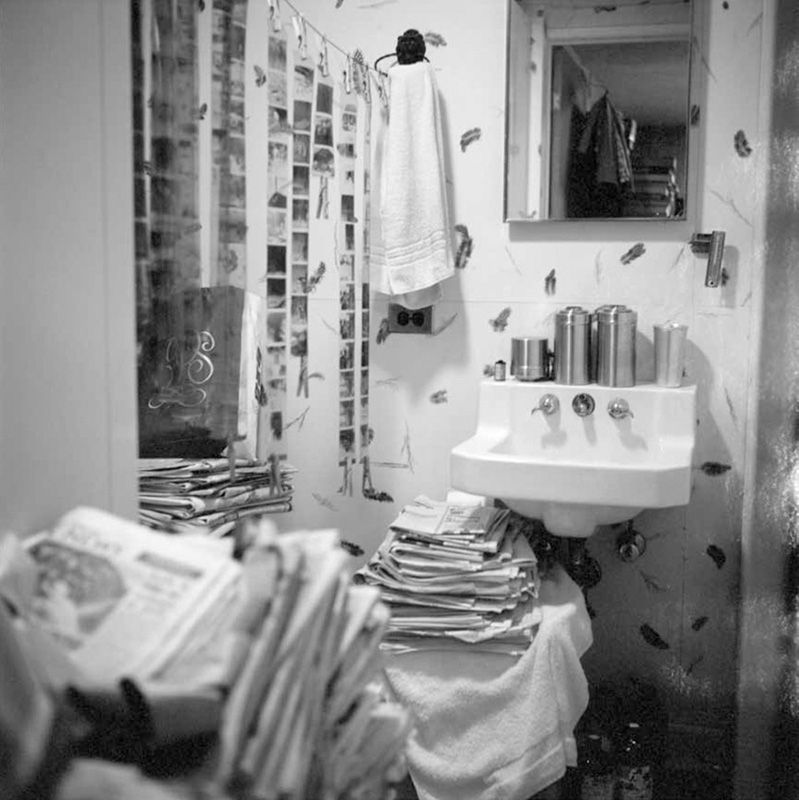
Maiers bathroom doubled as a darkroom. Highland Park, Illinois, c. 1950.
W hen Vivian Maier, in her early thirties and with a camera around her neck, traveled to Egypt to see the Sphinx in the late 1950s, she must have known on some level that she was turning into one herself. Over the course of a lifetime, shed experienced both the democratizing and the addictive natures of photography. When she died in 2009, Maier left behind an extraordinary archive of approximately 150,000 photographic imagesnegatives, transparencies, prints, and rolls of undeveloped filmthat few had known of, heard about, or seen. But once they did, and as news of Vivian Maiers work and life spread via social media, the woman who was so passionate but guarded about picture taking while alive became celebrated for it in death.
The intertwined stories of Maiers enigmatic life and the resurrection of her photographic work have generated unprecedented public and media attention. They touch on provocative themes and issues: the rise and power of an image-driven culture, the truths and stereotypes about artists lives, the linkage of celebrity and the marketplace, feminism, otherness, and obsession. As biographical details about this complex woman and her hauntingly beautiful images have surfaced, an unknown mid-twentieth-century picture maker has become a twenty-first-century phenomenon, the subject of art exhibitions, episodes of television shows, and a feature-length documentary film. Beyond the depth and quality of the work and all the speculation stirred up by the circumstances of her lifea narrative worthy of a made-for-television movie, the story of a nanny photographer that is good enough to be written about but without her another aspect of the recent fascination with Vivian Maier is important to consider as well: the extent to which we see something of ourselves in her work.
Next page
